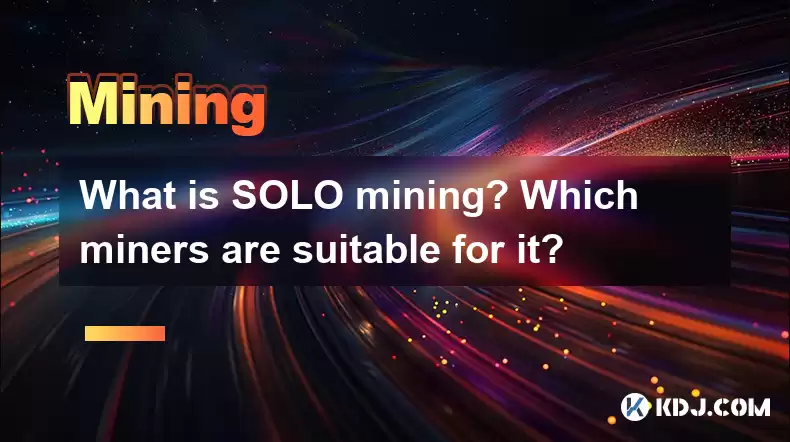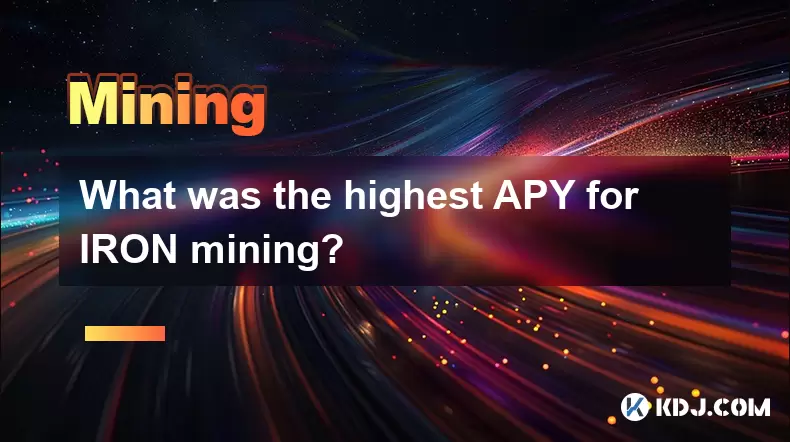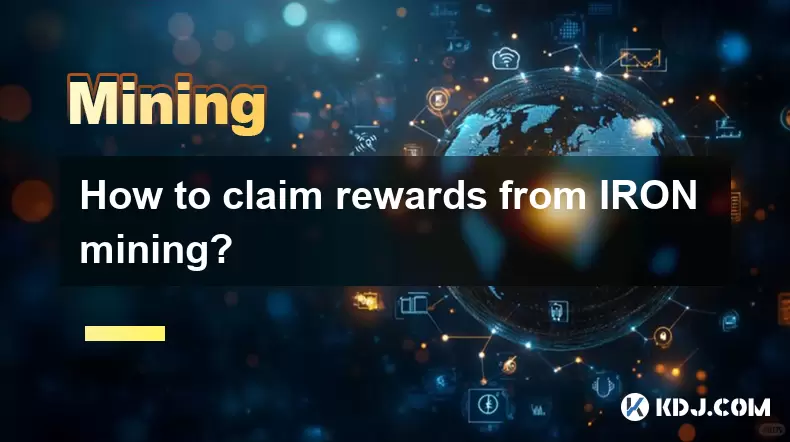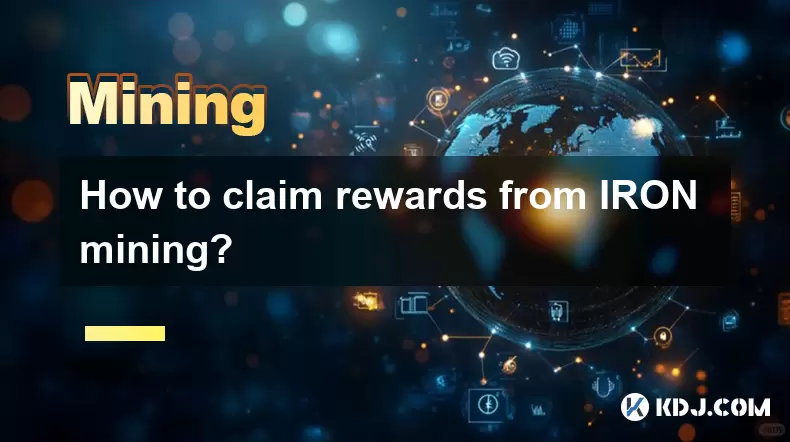-
 Bitcoin
Bitcoin $114400
0.68% -
 Ethereum
Ethereum $3550
2.48% -
 XRP
XRP $3.001
4.99% -
 Tether USDt
Tether USDt $0.9999
0.01% -
 BNB
BNB $757.6
1.46% -
 Solana
Solana $162.9
1.07% -
 USDC
USDC $0.9998
0.00% -
 TRON
TRON $0.3294
0.91% -
 Dogecoin
Dogecoin $0.2015
2.46% -
 Cardano
Cardano $0.7379
2.01% -
 Stellar
Stellar $0.4141
8.83% -
 Hyperliquid
Hyperliquid $37.83
-1.91% -
 Sui
Sui $3.454
0.76% -
 Chainlink
Chainlink $16.62
3.53% -
 Bitcoin Cash
Bitcoin Cash $554.6
2.84% -
 Hedera
Hedera $0.2486
3.91% -
 Ethena USDe
Ethena USDe $1.001
0.00% -
 Avalanche
Avalanche $21.95
3.34% -
 Toncoin
Toncoin $3.563
-2.85% -
 Litecoin
Litecoin $112.7
2.65% -
 UNUS SED LEO
UNUS SED LEO $8.977
0.13% -
 Shiba Inu
Shiba Inu $0.00001232
1.85% -
 Uniswap
Uniswap $9.319
2.93% -
 Polkadot
Polkadot $3.632
1.38% -
 Monero
Monero $307.2
2.36% -
 Dai
Dai $0.9997
-0.03% -
 Bitget Token
Bitget Token $4.340
0.91% -
 Pepe
Pepe $0.00001048
1.07% -
 Cronos
Cronos $0.1348
3.26% -
 Aave
Aave $261.5
1.93%
What is SOLO mining? Which miners are suitable for it?
SOLO mining lets individuals mine crypto independently, keeping 100% of rewards, but it requires more technical skill and has inconsistent income.
Apr 15, 2025 at 07:36 pm

What is SOLO Mining? Which Miners are Suitable for It?
SOLO mining is a type of cryptocurrency mining where an individual miner operates independently without joining a mining pool. In this method, the miner uses their own resources to solve complex cryptographic puzzles to validate transactions and add new blocks to the blockchain. The primary advantage of SOLO mining is that the miner retains 100% of the block rewards and transaction fees if they successfully mine a block. However, the downside is that the chances of finding a block are significantly lower compared to mining in a pool, which can result in inconsistent and unpredictable income.
Understanding the Mechanics of SOLO Mining
SOLO mining operates on the principle of individual effort. When a miner decides to go solo, they set up their mining equipment to work on solving the cryptographic puzzles required to mine a new block. The miner's software continuously attempts to find a hash that meets the required difficulty level set by the network. If successful, the miner broadcasts the new block to the network, and upon verification, they receive the full block reward and any associated transaction fees.
The process involves a few critical steps:
- Setting up mining software: The miner must configure their mining software to work independently. This software communicates directly with the blockchain network.
- Running the mining hardware: The miner's hardware, such as ASICs (Application-Specific Integrated Circuits) or GPUs (Graphics Processing Units), performs the computational work needed to solve the cryptographic puzzles.
- Monitoring and maintenance: The miner needs to monitor the mining process and ensure that the hardware is running efficiently. This includes managing heat dissipation, power consumption, and software updates.
Advantages and Disadvantages of SOLO Mining
SOLO mining offers several advantages, including:
- Full control over mining operations: The miner has complete control over their mining setup and can make decisions independently.
- 100% of rewards: If a block is successfully mined, the miner receives the entire block reward and transaction fees.
- No pool fees: There are no fees to be paid to a mining pool, which can save costs.
However, SOLO mining also has notable disadvantages:
- Inconsistent rewards: The miner may go long periods without finding a block, leading to unpredictable income.
- Higher initial investment: The cost of setting up and maintaining a solo mining operation can be high, especially for less experienced miners.
- Technical expertise required: Solo miners need to have a good understanding of the mining process and be able to troubleshoot issues that arise.
Which Miners are Suitable for SOLO Mining?
Choosing the right hardware is crucial for successful SOLO mining. The following types of miners are suitable for this method:
- ASIC Miners: Application-Specific Integrated Circuit (ASIC) miners are highly specialized hardware designed specifically for mining cryptocurrencies. They are the most efficient option for mining Bitcoin and other SHA-256-based cryptocurrencies. Popular models include the Antminer S19, Bitmain Antminer S9, and WhatsMiner M30S.
- GPU Miners: Graphics Processing Units (GPUs) are versatile and can be used to mine a variety of cryptocurrencies, including Ethereum and other Ethereum-based tokens. GPUs are less efficient than ASICs for Bitcoin mining but are suitable for altcoins. Popular GPUs for mining include the NVIDIA GeForce RTX 3080 and AMD Radeon RX 5700 XT.
- CPU Miners: Central Processing Units (CPUs) are the least efficient option for mining and are generally not recommended for SOLO mining due to their low hash rates. However, they can be used for mining less competitive cryptocurrencies or for educational purposes.
Setting Up a SOLO Mining Operation
Setting up a SOLO mining operation involves several steps:
- Choose the cryptocurrency: Decide which cryptocurrency you want to mine. Bitcoin, Litecoin, and Ethereum are popular choices.
- Select the appropriate hardware: Based on the chosen cryptocurrency, select the appropriate mining hardware. For Bitcoin, an ASIC miner like the Antminer S19 would be suitable.
- Download and install mining software: Depending on the hardware and cryptocurrency, choose the appropriate mining software. For Bitcoin, CGMiner or BFGMiner are commonly used.
- Configure the mining software: Set up the mining software to connect directly to the blockchain network. This involves entering the network's address and configuring other settings as required.
- Start mining: Once the hardware and software are set up, start the mining process. Monitor the operation to ensure it is running smoothly and efficiently.
Managing and Optimizing SOLO Mining Operations
Effective management and optimization are key to successful SOLO mining. Here are some tips:
- Monitor hardware performance: Keep an eye on the hash rate, temperature, and power consumption of your mining hardware. Use tools like Awesome Miner or MinerGate to monitor and manage your mining operation.
- Optimize cooling: Ensure that your mining setup has adequate cooling to prevent overheating, which can damage hardware and reduce efficiency.
- Stay updated: Keep your mining software and hardware drivers up to date to benefit from the latest improvements and security patches.
- Join mining communities: Participate in online forums and communities to learn from other miners and stay informed about the latest trends and techniques.
Frequently Asked Questions
Q: Can I switch from pool mining to SOLO mining easily?
A: Yes, you can switch from pool mining to SOLO mining by reconfiguring your mining software to connect directly to the blockchain network instead of a mining pool. However, keep in mind that SOLO mining requires more technical knowledge and patience due to the unpredictability of rewards.
Q: Is SOLO mining profitable for small-scale miners?
A: SOLO mining can be challenging for small-scale miners due to the high initial investment and the long periods between successful block discoveries. However, if a small-scale miner is willing to accept the risks and has the technical expertise, they can still attempt SOLO mining.
Q: How do I know if I've successfully mined a block in SOLO mining?
A: When you successfully mine a block, your mining software will notify you, and you will see the block reward and transaction fees credited to your wallet. Additionally, you can check the blockchain explorer for the network you are mining on to confirm the block's inclusion.
Q: Can I use cloud mining services for SOLO mining?
A: While cloud mining services typically operate within mining pools, some providers may offer options for SOLO mining. However, these services can be more expensive and less flexible than setting up your own hardware, so it's important to carefully evaluate the costs and benefits before choosing this route.
Disclaimer:info@kdj.com
The information provided is not trading advice. kdj.com does not assume any responsibility for any investments made based on the information provided in this article. Cryptocurrencies are highly volatile and it is highly recommended that you invest with caution after thorough research!
If you believe that the content used on this website infringes your copyright, please contact us immediately (info@kdj.com) and we will delete it promptly.
- Cryptocurrency, Altcoins, and Profit Potential: Navigating the Wild West
- 2025-08-04 14:50:11
- Blue Gold & Crypto: Investing Disruption in Precious Metals
- 2025-08-04 14:30:11
- Japan, Metaplanet, and Bitcoin Acquisition: A New Era of Corporate Treasury?
- 2025-08-04 14:30:11
- Coinbase's Buy Rating & Bitcoin's Bold Future: A Canaccord Genuity Perspective
- 2025-08-04 14:50:11
- Coinbase's Buy Rating Maintained by Rosenblatt Securities: A Deep Dive
- 2025-08-04 14:55:11
- Cryptos, Strategic Choices, High Returns: Navigating the Meme Coin Mania
- 2025-08-04 14:55:11
Related knowledge

What was the highest APY for IRON mining?
Jul 23,2025 at 05:14am
Understanding IRON Token and Its Mining MechanismThe IRON token is a stablecoin that operates within the Iron Finance ecosystem, primarily on blockcha...

What is impermanent loss in IRON pools?
Jul 23,2025 at 09:00am
Understanding Impermanent Loss in the Context of IRON PoolsImpermanent loss is a phenomenon that affects liquidity providers in decentralized finance ...

How to claim rewards from IRON mining?
Jul 23,2025 at 02:21pm
Understanding IRON Mining and Reward MechanismsIRON Finance operated as a decentralized finance (DeFi) protocol on the Polygon and Binance Smart Chain...

How to claim rewards from IRON mining?
Jul 29,2025 at 05:07am
Understanding IRON Mining and Reward MechanismIRON is a dual-token system designed to stabilize the value of a synthetic asset through a combination o...

IRON mining tutorial for beginners
Jul 27,2025 at 12:01am
What Is IRON and How Does It Work in the Cryptocurrency Ecosystem?IRON is a cryptocurrency token that operates on the Binance Smart Chain (BSC) and is...

How to calculate APY for IRON mining?
Jul 28,2025 at 09:49am
Understanding APY in the Context of IRON Token MiningWhen engaging in IRON token mining within decentralized finance (DeFi) platforms, Annual Percenta...

What was the highest APY for IRON mining?
Jul 23,2025 at 05:14am
Understanding IRON Token and Its Mining MechanismThe IRON token is a stablecoin that operates within the Iron Finance ecosystem, primarily on blockcha...

What is impermanent loss in IRON pools?
Jul 23,2025 at 09:00am
Understanding Impermanent Loss in the Context of IRON PoolsImpermanent loss is a phenomenon that affects liquidity providers in decentralized finance ...

How to claim rewards from IRON mining?
Jul 23,2025 at 02:21pm
Understanding IRON Mining and Reward MechanismsIRON Finance operated as a decentralized finance (DeFi) protocol on the Polygon and Binance Smart Chain...

How to claim rewards from IRON mining?
Jul 29,2025 at 05:07am
Understanding IRON Mining and Reward MechanismIRON is a dual-token system designed to stabilize the value of a synthetic asset through a combination o...

IRON mining tutorial for beginners
Jul 27,2025 at 12:01am
What Is IRON and How Does It Work in the Cryptocurrency Ecosystem?IRON is a cryptocurrency token that operates on the Binance Smart Chain (BSC) and is...

How to calculate APY for IRON mining?
Jul 28,2025 at 09:49am
Understanding APY in the Context of IRON Token MiningWhen engaging in IRON token mining within decentralized finance (DeFi) platforms, Annual Percenta...
See all articles

























































































